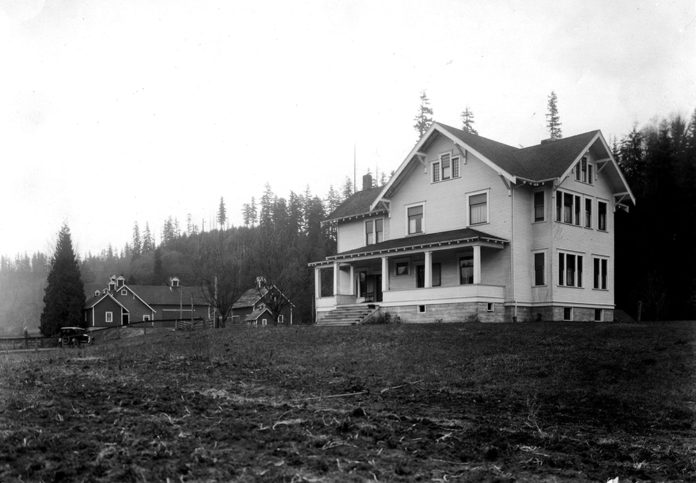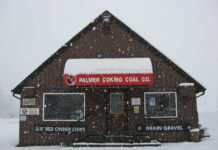Last week’s column painted a picture of the lower Cedar River valley in 1921, when dairy farms operated near the intersection of SR 169 and 140th Way S.E., just east of Renton. A century ago, cows still grazed on hundreds of acres of pastureland where tract homes, condominiums, a mobile home park, and the Maplewood Golf Course now sit. The most modern and successful of the dairies was owned by Robert James Elliott who immigrated from a farm where he was raised in Ontario, Canada.
By 1889, Elliott moved west when the Great Seattle Fire provided opportunities to earn a stake in life. He worked as a carpenter clearing fire debris and helping rebuild Pioneer Square. Five years of hard work provided the capital needed to buy 80 acres just east of Renton in 1894, with prominent local investors, Charles Burnett and J.C. Newberry. Within several years, Elliott owned 213 acres near Renton plus another 160-acre dairy farm in Snohomish County. R.J. Elliott plunged wholeheartedly into farming while applying modern scientific principles to managing his dairy herds. He built state of the art facilities for milking to improve hygiene and increase production. He bought one of the first tractors in the area, driving it 40 miles over county roads to service his two farms.
In 1911, Elliott replaced the small house he’d built in 1894 with a Craftsman-style home, grand enough to earn notice in a 1921 Seattle Sunday Times. Mr. Elliott was an expert carpenter. He cut the doors and window casings from cedar and whipsawed the lumber. Every room had nine- and ten-foot ceilings. The house even featured electricity before it was commercially available. Elliott developed a generator powered by spring water with excess electricity stored in large glass batteries.
R.J. Elliott was united in marriage to Miss Fannie Woodward of Ireland who moved to America with her family in 1894. The union produced three children, William, George, and Gladys. Mr. Elliott died in 1922, and his two sons, William and George split the inheritance of two farms. George operated the Renton farm until retiring in 1962, when his three sons briefly took over. The dairy herd was sold in 1968, and the property was slowly divided for development. The King County Landmarks Commission designated 15-acres plus all the buildings as Landmarks, but slow deterioration of the buildings proved more decisive. Urban development eventually began covering the Elliott farm, fields, and home. The last parcel, where those buildings once stood is now sprouting new homes under the name River Trail at Elliott Farm.
This 1921 photo of the Elliott’s home with farm buildings in the distance come courtesy of JoAnne Matsumura, an Issaquah historian. This is the second of a three-part series about the Elliott homestead. Next week, more about the Elliott’s development of a modern dairy farm.







